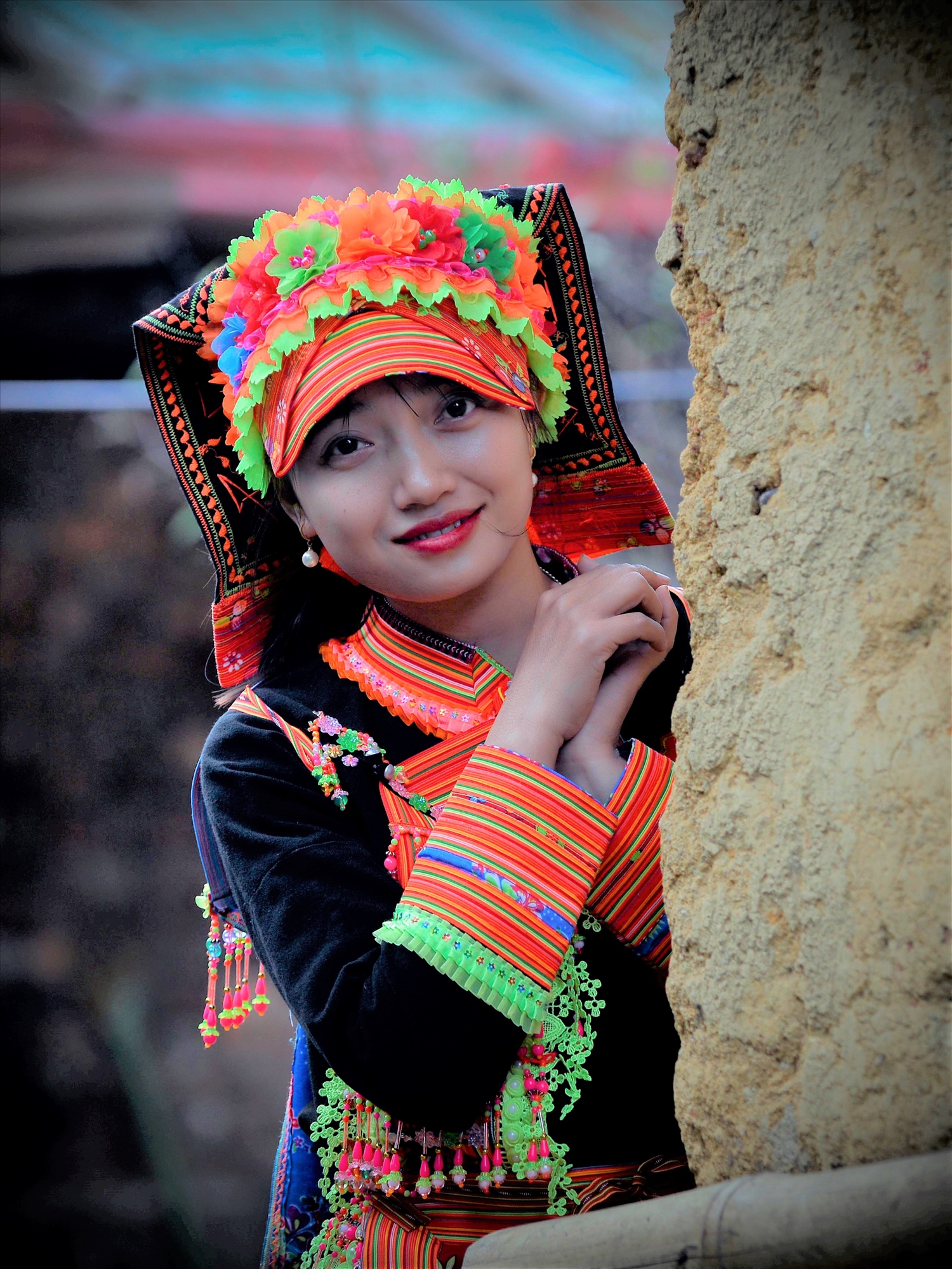THÁI ETHNIC GROUP (THÁI TRẮNG)
INTRODUCE
- General overview
In Lai Châu, the Thái ethnic group primarily resides in areas along rivers and streams, which are advantageous for their productive activities. Among these, the Thái Trắng people settle in the districts of Phong Thổ, Mường Tè, Sìn Hồ, and Lai Châu city.
There is an opinion suggesting that the ancestors of a portion of the Thái Trắng people in Northwest Vietnam in general, and specifically those in Lai Châu province, were of ancient Tày-Thái ethnic descent. At the beginning of the 1st millennium AD, the ancestors of the ancient Tày-Thái ethnic group had participated in the construction of the Âu Lạc nation under the reign of Thục Phán An Dương Vương (King An Dương Vương). Subsequently, a part of this group migrated westward, diverging from the original Tày ethnic group, which is known today as the Tày people. Up to the present time, cultural elements of the Tày people are still distinctly evident among the Thái Trắng people residing in Phong Thổ district, such as carrying Tày surnames (Nông, Hoàng, Thùng/Đồng), celebrating the Xíp xí festival, ... Nevertheless, due to their long-term cohabitation with the indigenous Thái people, they have also assimilated aspects of the Thái cultural norms.
According to ancient Thái script documents, the Thái Trắng ethnic group is considered descendants of the Bạch Y people who originally resided in the southern region of Yunnan Province, China, before migrating to the Northwest. By the early years of the 2nd millennium AD, the ancestors of the Thái Trắng began to settle in Mường Lay and Mường Tè. However, it was not until the 13th century that they established dominance in Mường Lay. From Mường Lay, a faction continued to expand their influence into regions such as Mường Chiên (Quỳnh Nhai) and Mường Chiên (Mường La), Bắc Yên, Phú Yên (Sơn La).
Mường So stands as one of the focal points where Thái Trắng people congregate. Before the 11th to 12th centuries, a faction of Thái Trắng individuals had settled in Mường So. Later, this region received another faction of Thái Trắng people who migrated from Mường So Luông, Yunnan Province (China). From Mường So, these groups of Thái Trắng continued their migration and integration with other settled Thái Trắng factions in areas like Than Uyên (Lai Châu) and Văn Bàn (Lào Cai).
- Village space
From 1954 and earlier, the traditional society of the Thái people was organized according to the model of village-mountain village systems (comprising two levels: Mường-Bản). This model was a distinctive and pervasive characteristic applicable to both the Thái Đen and the Thái Trắng ethnic groups.
The “bản mường” is a social concept within the Thái community, formed by the combination of two nouns, “bản” and “mường.”
“Mường” represents an economic and social unit that evolved throughout history. Following centuries of migration, the lives of the Thái residents became stable, and many villages merged to form larger social units known as “mường.”
In the traditional social structure of the Thái people, there is often a division into large and small “mường,” with consistently a central “mường” gathering others, known as “mường luông.” The smaller units are referred to as “mường vảy.”
Currently, Thái society has undergone significant changes compared to before 1954. The traditional “bản-mường” social structure has been disrupted, the aristocracy and feudal positions have been abolished, and the peasant class has been emancipated. The people’s governments have been established, and the people’s ownership has been emphasized. Ethnic relationships based on principles of unity, equality, and mutual assistance have been strengthened. Consequently, the customary laws of “mường” are no longer relevant. However, within the traditional “bản-mường” social structure, community relationships still significantly influence human behavior. Therefore, in organizing, governing, and managing the community, we cannot disregard the importance of these relationships.
- Living space
The Thái people often select elevated and airy locations to build their stilt houses. In the design and construction of these traditional stilt houses, odd numbers symbolize upward movement and development, whereas even numbers symbolize stability. The Thái people deliberately incorporate odd numbers, expressing hopes for a fortunate and auspicious life.
- Agricultural production activities
The Thái people residing in the valleys and basin areas usually have rivers and streams flowing through, which are conducive to wet rice cultivation. On the mountain slopes, there are terraced fields that are suitable for growing paddy rice and various other crops. Alongside farming and agriculture, the Thái people engage in other economic activities such as gardening, raising livestock and poultry, other works, and hunting, fishing, and gathering.
The Thái refers to the flat fields in the valleys as “na”, which is from here creating irrigation canal systems for the cultivation of wet rice, considering it a foremost and vital occupation. Thái communities have utilized cattle-pulled plows for farming purposes, a practice that dates back to early times.
Based on the terrain, the Thái people categorize their rice fields into various types: flat fields, terraced fields, and extensive flat field areas forming large paddy fields. In terms of soil fertility, flat fields consistently outperform terraced fields, and fields with readily available water always outperform those reliant on waiting for water.
The rice varieties cultivated by the Thái community are highly diverse. Among these, sticky rice (planted in lowland fields with stagnant water and abundant humus), “nếp nhoi” (cultivated in fields with minimal water), “khấu chăm” and “khấu sẻ” (plain rice) are more commonly cultivated than others.
Although the techniques for cultivating wet rice have reached an advanced level, the Thái people still emphasize cultivation in fields because they produce various essential grains. Upland fields form the basis for the development of livestock breeding, provide vegetables for daily meals, and serve as raw materials for weaving. Thái fields are classified into various types: sloped fields, flat fields, single-crop fields, double-crop fields, plowed fields, perforated fields, rice fields, corn fields, cassava fields, sweet potato fields, vegetable fields, bean fields, cotton fields, and mulberry fields.















